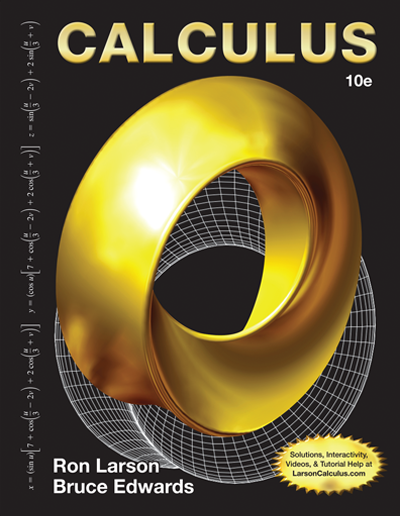René Descartes
(1596 – 1650)
René du Perron Descartes was described by the French writer Bernard le Bovier de Fontenelle as one “who tried in one bold leap to put himself at the source of everything, to make himself master of the first principles by means of certain clear and fundamental ideas, so that he could then simply descend to the phenomena of nature as to necessary consequences of these principles. . . . [He] set out from what he knew clearly, in order to find the cause of what he saw.” Descartes’s astonishing egocentricity led to many errors, but his enormous contribution to mathematics and philosophy is indisputable.
Descartes was a small man who habitually dressed in black. He had a prominent nose and a jutting forehead; his thick black hair fell past his shoulders. He never married, though he did have a daughter who died, to his sorrow, at the age of five.
Descartes was born in the small town of La Haye, France on March 31, 1596, to a family notable for its learned men. His mother died soon after his birth; from her, Descartes inherited a feeble constitution, but enough wealth to guarantee financial freedom.
At about nine years of age, Descartes was sent to the Jesuit college of La Fléche in Anjou. There he studied physics and metaphysics, moral philosophy, logic, classical geometry, modern algebra, and literature.
The eight years spent at La Fléche indelibly shaped his thought and habits. It was at La Fléche that he developed a love of poetry and a devotion to the Roman Catholic Church. He also acquired the practice, in which he indulged for the remainder of his life, of lying in bed much of the day. It was in bed that Descartes contemplated the realms of nature and thought, and in bed that he sought refuge from tiresome intrusions on his solitude. He later wrote, “The principle which I have always observed in my studies, and which I believe has helped me most to gain what knowledge I have, has been never to spend beyond a few hours daily in thoughts which occupy the imagination, and a very few hours yearly in those which occupy the understanding, and to give myself all the rest of my time to the relaxation of the senses and the repose of the mind.”
In 1618, after leaving La Fléche and earning a degree in law from the University of Poitiers, he enlisted as a volunteer in the army of Prince Maurice of Nassau, it being customary for young men of his station to pursue a career in the military or in the Church. He was stationed at Breda, in the Netherlands. There was at that time a truce, so Descartes was able at his leisure to study acoustics, ballistics, and military engineering.
In November, 1618 Descartes noticed a group of men gathered around a posted notice. He requested a translation from Flemish, the language in which the placard was written, to Latin or French. The man he asked was Isaac Beeckman, a prominent mathematician; the notice was an invitation to solve the mathematical problem it presented. Descartes accepted the challenge and soon gave Beeckman the correct solution.
Recognizing the young soldier’s genius, Beeckman established himself as Descartes’s mentor. Beeckman’s encouragement spurred Descartes’s interest in theoretical problems and in March of the following year, Descartes reported to Beeckman his invention of analytic geometry. This, Descartes’s first discovery (made while lying in bed), was of inestimable value to succeeding generations of scientists, including Newton.
In November, 1619, while stationed on the Danube with the army of the Duke of Bavaria, Descartes had a dramatic, almost mystical experience that defined the course of his thought and study. As he meditated in a poêle, an overheated room, he determined to question all that he had ever learned, and establish certain self-evident principles from which to reconstruct all science. He resolved that he would do all this alone, thus ensuring perfect congruence in every aspect of his system.
That night, Descartes had a series of dreams, or visions, reported by his 17th-century biographer, Adrian Baillet. In the first of these dreams, Descartes saw himself on a street in the midst of a violent windstorm. A weakness in his right leg caused Descartes to fall, though his companions were standing. Upon awakening, Descartes determined that the weakness in his leg was symbolic of errors of the past. He slept again, and dreamed of thunder and a room filled with sparks. This he believed was indicative of the spirit of truth, descending to possess him. He dreamed once more, this time of a dictionary on a table in his room. Beside it lay another book in which he read the words, Quid vitae sectabor iter?, that is, “What way of life shall I follow?” A mysterious stranger appeared in the room and drew Descartes’s attention to the poetry of Ausonius. This vision was interpreted by Descartes as a sign that the path of all thought and knowledge lay open before him. Though some details of the dreams may be apocryphal, there is little doubt that an experience of this sort formed the basis of Descartes’s extraordinary confidence in his intellectual prowess.
By 1628, Descartes had left the military. He returned to the Netherlands, where he devoted himself to developing a bold new system of thought. Descartes’s decision to doubt all that he had ever learned led him to accept the existence of one who doubts, that is, himself. The Latin phrase, Cogito, ergo sum, or “I think, therefore I am,” was the basis of Descartes’s philosophy. From this initial assertion, he posited two basic substances—matter and spirit. Matter consists of the bodies of men and animals, or extended substance; spirit is intellect, or unextended thinking substance. God is an uncreated, infinite Spirit, and has ordained that what is clearly seen is true. Descartes thus believed that God, in His infinite goodness, would protect him from error. In fact, Descartes was quite often wrong; nevertheless, the system he devised has earned him the title of father of modern philosophy.
Descartes’s most egregious error was his vortex theory, an elaborate explanation of the means by which planets are kept in their orbits, that was most convincingly refuted by Newton’s Principia Mathematica. Descartes’s most spectacular successes were his contributions to mathematics.
Descartes added his famous La Géométrie as an appendix to his Discours de la méthode pour bien conduire sa raison, et chercher la vérité dans les sciences, or Discourse on Method. La Géométrie, his only mathematical work, was intended to demonstrate the application of his scientific method to mathematics. Much of the Discourse on Method itself has been disproved; La Géométrie, the afterthought, presented his invention of “coordinate geometry,” or “analytic geometry,” as it would come to be known. This unification of the previously separate disciplines of algebra and geometry permitted curves to be plotted on the Cartesian plane by means of algebraic equations.
Latin had been a sort of universal language among scholars, who used it to communicate their discoveries to one another throughout Europe. Descartes broke with this tradition and frequently wrote in French, but he did use the pseudonym Renatus Cartesius, a Latinized version of his name. For this reason, Descartes’s philosophy, and the system he devised for plotting curves represented by equations, are termed “Cartesian.”
Among Descartes’s other innovations were the introduction of the square root symbol and the use of exponents, and his system of denoting constants by letters at the beginning of the alphabet, and variables by letters at the end.
While Descartes lived quietly in the Netherlands, the eccentric young Queen Christina of Sweden, whose popularity had plummeted in the wake of her erratic and unseemly behavior, sought to polish her tarnished public image. She decided to cultivate a reputation as an intellectual by surrounding herself with learned men. Among those the Queen invited to her court in Stockholm was Descartes. He was at first reluctant to join her, but was ultimately unable to resist the attention of royalty. He set out for Sweden in September, 1649.
Descartes discovered to his horror that Queen Christina desired to engage in philosophical discourse at 5 a.m., three times each week. Exposure, at night, to the harsh winds of an especially brutal Swedish winter proved too much for Descartes’s delicate constitution. He contracted pneumonia and died in February, 1650.
Links
http://www-history.mcs.st-andrews.ac.uk/Biographies/Descartes.htmlhttp://www.biography.com/people/ren%C3%A9-descartes-37613
http://plato.stanford.edu/entries/descartes/
References
- Asimov, Isaac. Asimov’s Biographical Encyclopedia of Science and Technology. Garden City, New York: Doubleday & Company, Inc., 1972.
- Crombie, A. C. “Descartes.” In Mathematics in the Modern World, edited by Morris Kline, 40–43. San Francisco: W. H. Freeman and Company, 1968.
- Gillispie, Charles Coulston, ed. Dictionary of Scientific Biography. Vol. IV. New York: Charles Scribner’s Sons, 1971.
- Hooper, Alfred. Makers of Mathematics. New York: Random House, Inc., 1948.
- Kasner, Edward and James Newman. Mathematics and the Imagination. New York: Simon and Schuster, 1963.











